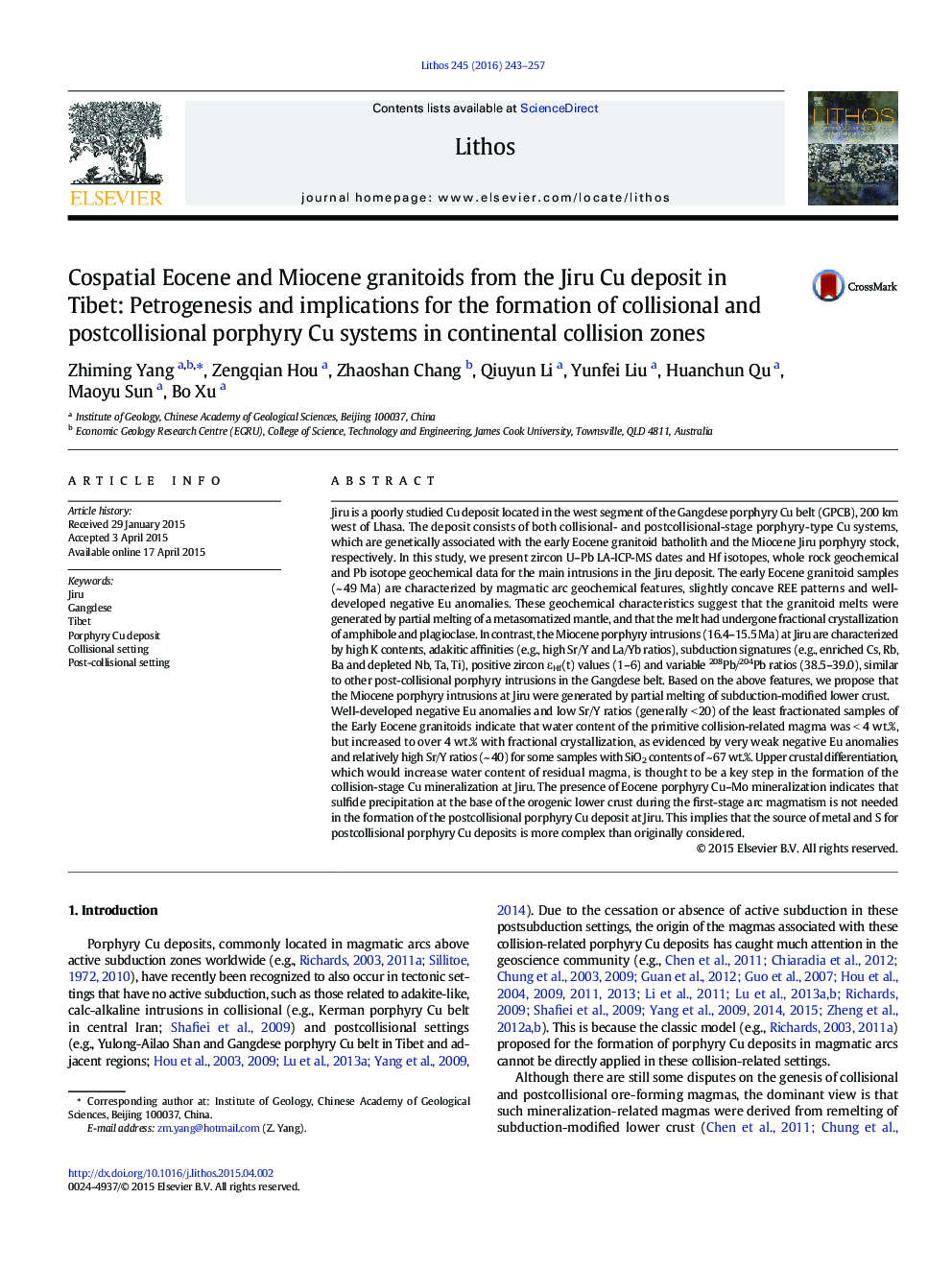| کد مقاله | کد نشریه | سال انتشار | مقاله انگلیسی | نسخه تمام متن |
|---|---|---|---|---|
| 4715538 | 1638651 | 2016 | 15 صفحه PDF | دانلود رایگان |

• We report zircon U–Pb dates and Hf isotopes, geochemical and Pb isotopic data.
• We investigate magmatic origin of main intrusions in the Jiru deposit.
• We investigate the genesis of both collisional- and postcollisional-stage porphyry-type Cu systems.
Jiru is a poorly studied Cu deposit located in the west segment of the Gangdese porphyry Cu belt (GPCB), 200 km west of Lhasa. The deposit consists of both collisional- and postcollisional-stage porphyry-type Cu systems, which are genetically associated with the early Eocene granitoid batholith and the Miocene Jiru porphyry stock, respectively. In this study, we present zircon U–Pb LA-ICP-MS dates and Hf isotopes, whole rock geochemical and Pb isotope geochemical data for the main intrusions in the Jiru deposit. The early Eocene granitoid samples (~ 49 Ma) are characterized by magmatic arc geochemical features, slightly concave REE patterns and well-developed negative Eu anomalies. These geochemical characteristics suggest that the granitoid melts were generated by partial melting of a metasomatized mantle, and that the melt had undergone fractional crystallization of amphibole and plagioclase. In contrast, the Miocene porphyry intrusions (16.4–15.5 Ma) at Jiru are characterized by high K contents, adakitic affinities (e.g., high Sr/Y and La/Yb ratios), subduction signatures (e.g., enriched Cs, Rb, Ba and depleted Nb, Ta, Ti), positive zircon εHf(t) values (1–6) and variable 208Pb/204Pb ratios (38.5–39.0), similar to other post-collisional porphyry intrusions in the Gangdese belt. Based on the above features, we propose that the Miocene porphyry intrusions at Jiru were generated by partial melting of subduction-modified lower crust.Well-developed negative Eu anomalies and low Sr/Y ratios (generally < 20) of the least fractionated samples of the Early Eocene granitoids indicate that water content of the primitive collision-related magma was < 4 wt.%, but increased to over 4 wt.% with fractional crystallization, as evidenced by very weak negative Eu anomalies and relatively high Sr/Y ratios (~ 40) for some samples with SiO2 contents of ~ 67 wt.%. Upper crustal differentiation, which would increase water content of residual magma, is thought to be a key step in the formation of the collision-stage Cu mineralization at Jiru. The presence of Eocene porphyry Cu–Mo mineralization indicates that sulfide precipitation at the base of the orogenic lower crust during the first-stage arc magmatism is not needed in the formation of the postcollisional porphyry Cu deposit at Jiru. This implies that the source of metal and S for postcollisional porphyry Cu deposits is more complex than originally considered.
Journal: Lithos - Volume 245, 15 February 2016, Pages 243–257